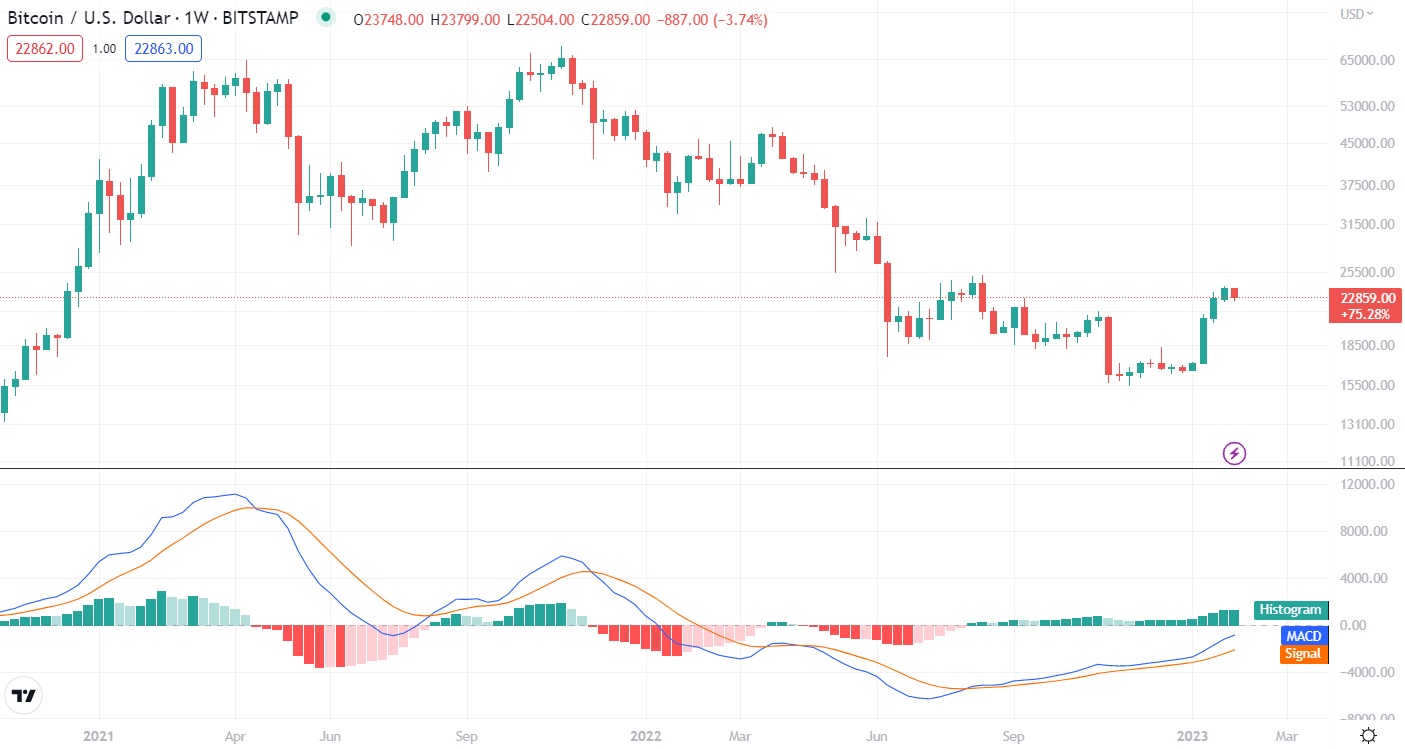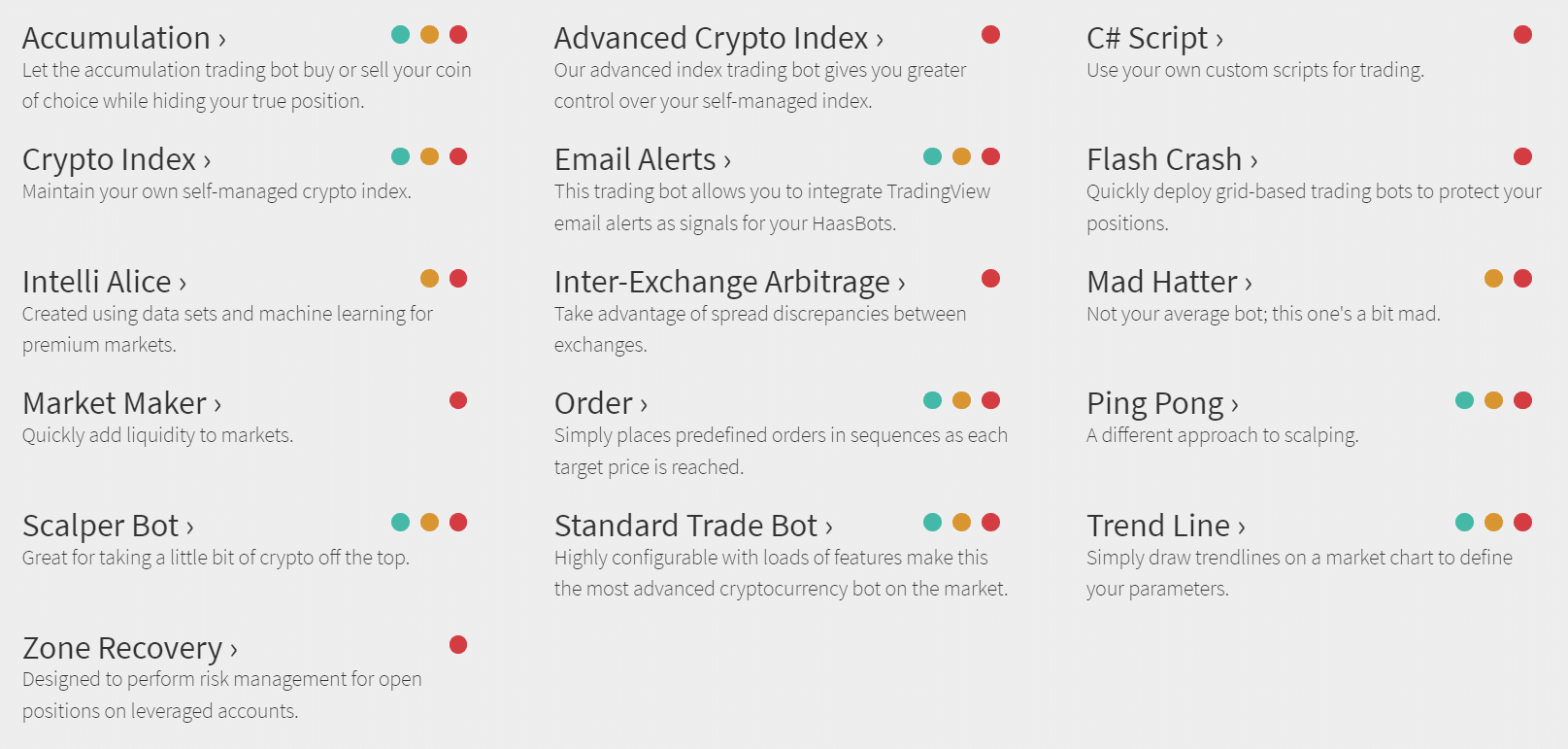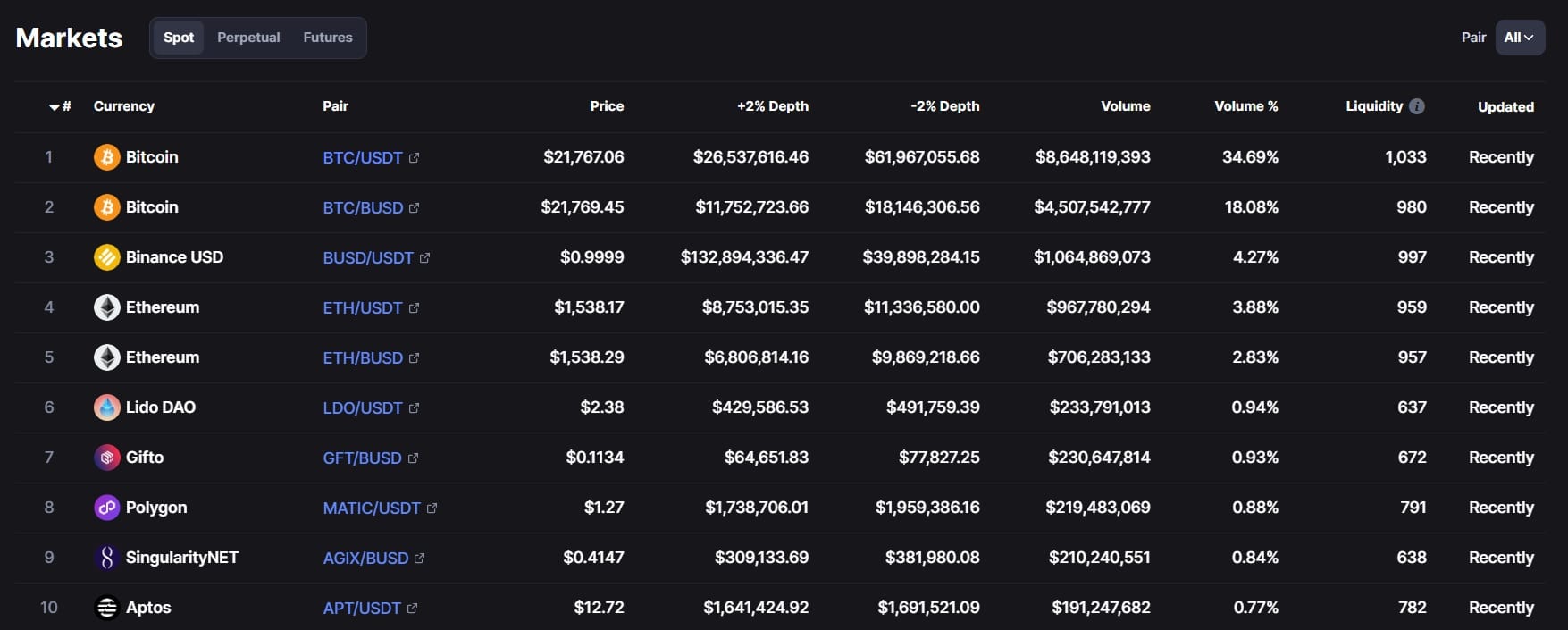We may earn a commission from links on our site, but this doesn’t affect our reviews. Learn more.
Hedge With Crypto is an independent publisher that provides objective and free content. Articles on our site may include links to our partners. If you click on these links, we may earn a commission. However, our editorial content remains unbiased, reflecting our own opinions or the general information available. For more information on our company policies, read the Affiliate Disclosure, Privacy Policy, and Terms & Conditions.
8 Crypto Trading Tips To Become A Profitable Trader
Trading isn’t for everyone. But you can increase your chances of success by following these important cryptocurrency trading tips.
Hedge with Crypto aims to publish information that is factual and accurate as of the date of publication. For specific information about a cryptocurrency exchange or trading platform please visit that provider’s website. This information is general in nature and is for education purposes only. Hedge With Crypto does not provide financial advice nor does it take into account your personal financial situation. We encourage you to seek financial advice from an independent financial advisor where appropriate and make your own enquiries.
TABLE OF CONTENTS
Many traders just getting into the crypto market have heard the foreboding expression that “95% of all traders lose money”. This isn’t exactly an encouraging statistic – but with enough patience, practice, and skill, it is very possible to make money by trading cryptocurrencies. This article will dive into several crypto trading tips, targeted at both beginner and intermediate traders, that can assist them on their investment journeys.
Best Crypto Trading Tips To Know
1. Understand crypto exchanges, how to use them and their fees
Understanding how crypto exchanges work is the first step to becoming a successful trader. Lacking knowledge on this topic can easily result in making haphazard, unintentional trades. In particular, investors need to ensure they’re across each platform’s trading fees, as they can accumulate very quickly.
While 1% per order on a “buy and hold” portfolio may not seem like a big deal, for more active traders, it can make a big difference in the P&L at the end of the day. Traders must also consider trading spreads and slippage. Combined with trading fees, a 1% transaction can be 3 to 4% once the spreads are taken into account. Therefore, it's vital to understand how to reduce crypto fees to lower overall investment costs.
2. Learn how to interpret trading indicators and charts
Technical analysis (TA) is the core foundation of most advanced trading strategies. This form of analysis relies on identifying trends within the crypto market by studying data such as price movements and trading volume. This is nearly always done using charting software (such as TradingView) and by interpreting indicators on it. Some of the most popular technical indicators for crypto include:
- Relative Strength Index (RSI)
- Bollinger Bands
- On-balance Volume (OBV)
- Ichimoku Cloud
- Moving Average Convergence Divergence (MACD)
- Exponential Moving Average (EMA)

These indicators are typically used in conjunction with one another when cryptocurrency trading to confirm trends and determine any potential shifts in momentum. They can be used to “time the market”, by figuring out when a coin is about to rise or fall in value before the market reacts. By doing so, investors can identify various entry and exit points for certain crypto assets.
“You’ve first got to learn how to read the charts”– Ezekiel Chew
While indicators attempt to quantify the psychological and emotional elements of trading, the reality is humans are unpredictable and past performance is not a reliable indicator. Therefore, indicators and cryptocurrency charts should form one part of a well-rounded trading strategy rather than being the sole decider of when/what to trade.
3. Develop and refine a trading strategy
Never place a trade unless it’s part of a well-thought-out, over-arching strategy. This means identifying buy/sell opportunities, finding comfortable profit margins, and creating contingencies before executing a position. Refining this strategy will require investors to use technical indicators, perform fundamental analysis, and learn from their mistakes.
“Trade with a proven trading strategy or combination of strategies” – Ezekiel Chew, professional day trader.
A popular trading strategy for newcomers is Dollar-Cost Averaging (DCA). This method involves buying a set amount of cryptocurrency at regular intervals, regardless of its price. That way, investors can build up their portfolios while ignoring the volatility of a constantly-moving market. To measure the performance of a trading strategy, using tools such as Edgewonk – an online trading journal can be very effective to record and improve a trading strategy.
4. Automate the trading process
The cryptocurrency markets are open 24/7 and tend to see the most activity during the US stock market’s trading hours. But not everyone lives in a timezone compatible with the United States, which can leave investors late to capitalize on certain trends or opportunities. The solution? Automate the trading process.
More experienced traders can consider using cryptocurrency trading bots, which are one of the best ways to capitalize on opportunities while away from their devices. The bots can be configured to execute orders based on a particular trading strategy or use in-built bots to trade Bitcoin (or other digital assets) within a certain price range or perform other tasks. Automating a crypto strategy takes patience, but the rewards can be worth it for those that find a set-and-forget bot strategy that is profitable.

5. Practice trading using a demo account
While new investors can (and should) perform lots of research on trading strategies, there’s no substitute for experience. Utilizing one of the many crypto exchange demo accounts can be a beneficial tool for beginners to expand their skill set and “learn on the job”. Newer traders can become acquainted with trading tools, and how everything works without risking any capital.

A demo account’s value will slowly diminish over time as an investor becomes more confident in their knowledge. This is because the demo account has no actual bearing on a financial situation, so may result in more risk-taking that isn’t reflective of a real trading environment. So, another option is for traders to simulate the pressure of real-time trading thanks to the extremely low barriers to entering the crypto market.
6. Stick with major trading pairs
For every successful small-cap token that catapults in price, there are ten others that are scams or have little to no functional value. Major crypto assets like Bitcoin and Ethereum are much stabler and have, to date, always performed well over long timeframes. Although this short-term volatility can be a useful tool for advanced traders, such fast price movements can quickly overwhelm beginners.
“Most people… lost all their money taking gambles on NFTs and Memes. There’s a lesson in there” – IncomeSharks, crypto trader and popular crypto influencer.
Another advantage of sticking with major trading pairs is liquidity. Periods of low liquidity can be harmful to traders – particularly those with large portfolios – due to a couple of reasons. The main issue is slippage, which can completely ruin profit margins in fast-moving markets like cryptos. In addition, low-liquidity altcoins might not sell at all, leaving investors stuck with a failed asset in their portfolios. Crypto screeners such as Coinmarketcap and Coingecko can be used to find the highest traded pairs on any crypto exchange.

7. Always consider the longer-term trend
The cryptocurrency market is renowned for wild price movements that can create plenty of trading opportunities for the experienced – but value shifts in a 24-hour period should never be relied on. Instead, traders will benefit from considering both the short-term and long-term trends when executing trades.
Traders will find that their success rates will be higher by trading in the same direction as the overarching trend on a higher timeframe. Viewing assets through the lens of longer-term trends can help avoid trading with emotion and counter-trend trading with a reduced probability of making a profit. There are several chart patterns that can be used in crypto to help identify long-term continuation and reversals in price.
Generally, a long-term downtrend will present investors with short trading opportunities, while a bull market is a good time to buy and use leverage to enter a long position.
8. Mitigate risk
Part of a successful trading strategy is having contingencies in place to prevent losses from piling up. No matter whether it’s a day trader or someone who only places an order every couple of weeks, there are a few ways they can avoid their portfolios from vanishing.
- Diversify assets. It’s vital that crypto traders of all experience levels have a diversified portfolio – investors shouldn’t have all their eggs in one basket. For a “buy and hold” strategy, this might just mean buying up tokens from different sub-sectors of the blockchain industry (e.g. DeFi, Metaverse, Privacy). A more active trader might consider placing different order types to broaden their exposure to the market.
- Utilize stablecoins. During periods of high volatility – especially in bear markets – investors can reduce their positions in smaller market cap altcoins and replace them with stablecoins. This can be a solid way to avoid daily market fluctuations while keeping cash in crypto to make trades somewhere down the line.
- Use a non-custodial wallet. Although not strictly a trading tip, investors with valuable crypto portfolios should strongly consider moving their assets into a non-custodial wallet. Trusted hardware wallets like the Ledger Nano X are the most secure, but day traders may prefer a hot wallet like MetaMask or Trust Wallet. Don't leave all your cryptos on an exchange as it can be at risk.
Common Crypto Trading Mistakes To Avoid
There are typical pitfalls to avoid when trading cryptocurrency. Staying clear of these trading mistakes can impact the bottom line:
- Don’t go “all in” and trade more than you can afford to lose. Never invest money that is needed for bills and groceries. Allocate a small percentage of capital for trading and hedge the risk of one asset underperforming by spreading investment across various crypto tokens.
- Don’t force trades (and keep your emotion under control). Trading with emotion is one of the practice’s biggest taboos. There is perhaps no bigger (and more common) mistake that beginner – and even experienced – investors make. It can be very easy to “get attached to your bags” and feel some sort of connection to certain crypto assets. However, emotional trading often clouds judgment, quells rational thinking, and quickly leads to poor trades.
- Don't fall victim to FOMO “Fear Of Missing Out”. The crypto market has been rife with FOMO as the value of many assets is built on speculation. Certain coins can rapidly rise in value on the back of nothing but social media hype. Seeing others making a tidy profit can cause traders to jump onto the bandwagon after a token has already risen 20%+. This is a reactionary trade that will more often than not lead to losses.
- Don't be greedy. When formulating a trading strategy, it’s a good idea to set intermittent goals for profit-taking. For example, a longer-term investor might sell 10% of their BTC holdings for every 10% it rises. However, when an asset is enjoying a sustained bull run, it can be easy to want to “let it ride”. Straying away from a well-thought-out plan, even if it works in the short term, is a recipe for long-term failure.
- Don’t blindly follow trading signals from “experts”. Always DYOR. The crypto markets are built quite heavily on speculation of future value – which means they are closely tied to the hype and social media activity. It’s important to avoid falling for the advice of one or two people, especially when they claim trades as “sure things”. Chances are these “experts” hold positions in that crypto and want to lure new investors to artificially inflate its price.